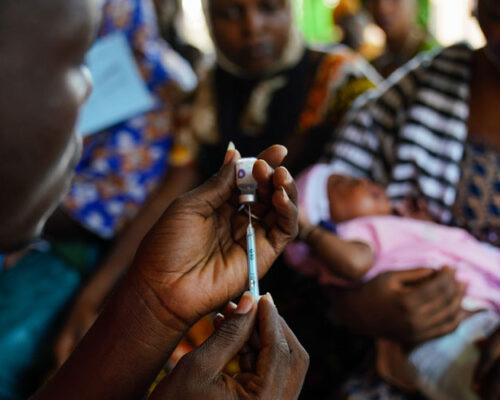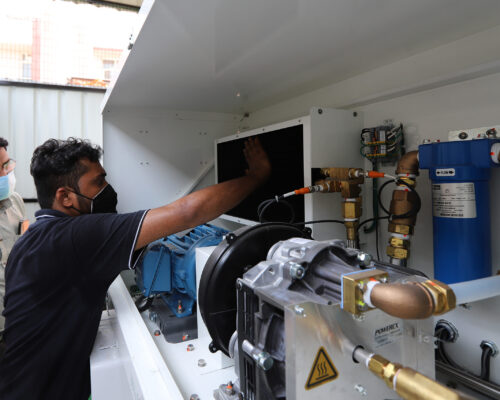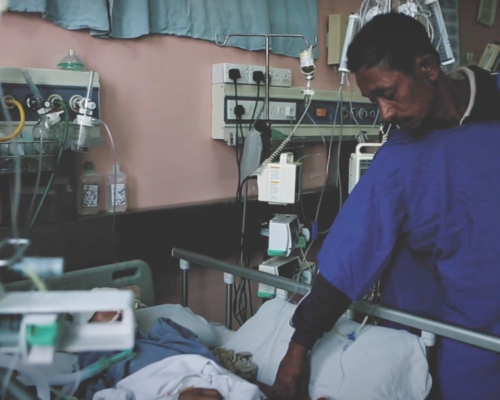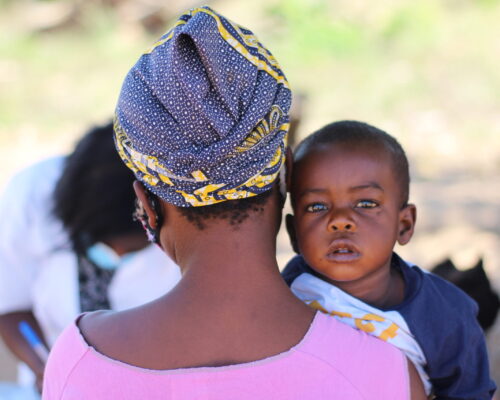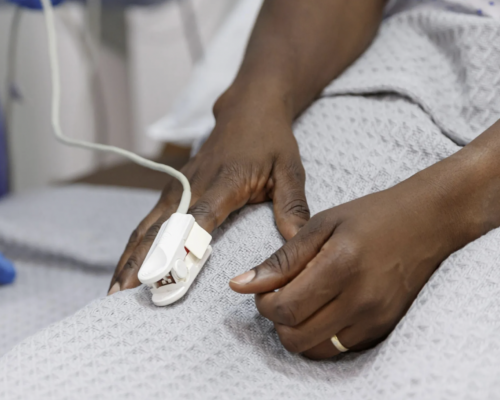
About
The Every Breath Counts Coalition is the world’s first public-private partnership with an ambitious goal: to dramatically reduce the number of children and adults dying from pneumonia by 2030 by closing critical gaps in pneumonia prevention, diagnosis, and treatment.
Our network of UN agencies, non-government organizations, government and foundation donors, companies, and academic institutions are supporting governments in countries with some of the highest burdens of pneumonia, and are dedicated to preventing hundreds of thousands of pneumonia deaths each year.
Identifying the most vulnerable adults and children and ensuring that they receive proven, high-impact interventions at every level of the health system is the most effective strategy to close the critical gaps in pneumonia prevention, diagnosis, and treatment and save lives.
In most countries expanding coverage of the pneumonia-fighting vaccines (DTP, Hib, PCV, measles, flu, and COVID-19) will be a top priority as coverage rates are often very low. In other countries improving access to proper diagnosis and treatment with better tools like pulse oximetry and increased access to child-friendly antibiotics, oxygen, and therapeutic foods will be crucial.
Working directly with mothers and families to improve child nutrition, household air quality, and hand washing with soap will strengthen prevention. Increasing the education, incomes, and agency of mothers with small children will advance child health and boost development everywhere.
Although pneumonia deaths are concentrated in 20 countries representing all regions and income levels, Every Breath Counts focuses on the specific challenges of reducing pneumonia deaths among the most vulnerable populations of children and adults in low- and middle-income countries where health systems are weaker. There is a particularly large and vulnerable group of children living in Nigeria, Chad, the Democratic Republic of Congo, South Sudan, Ethiopia, Somalia and Kenya who are at greatest risk of death from pneumonia.
In these countries, closing the critical gaps in pneumonia prevention, diagnosis, and treatment can save the greatest number of lives and accelerate achievement of the Sustainable Development Goals for health by 2030. Find out more about the 20 countries where pneumonia deaths are concentrated and the seven countries across Africa that are a hotspot for child pneumonia deaths.
Find out more about our members and our initiatives.
Specific Every Breath Counts activities include:
-
-
- Ensuring countries have national strategies to control pneumonia based on local cause-of-death and risk data, to save lives now and prepare for the next respiratory pandemic
- Increasing the domestic health resources and international development assistance allocated to pneumonia-related interventions (e.g., vaccination, nutrition, clean air, diagnosis with pulse oximetry and new diagnostic tools, and access to recommended antibiotics and oxygen treatments)
- Supporting country efforts to prioritize pneumonia in applications for funding from international health and development agencies (e.g., Gavi, the Global Fund, and the Global Financing Facility for Women, Children and Adolescents)
- Accelerating introduction of the PCV vaccine in countries with no coverage and increasing efforts to lift coverage to above 90% in low-coverage countries
- Advancing Universal Health Coverage (UHC) schemes that fully cover the costs of pneumonia vaccines, diagnostic and treatment services, including improved diagnostic tools, pulse oximetry, recommended antibiotics, and oxygen therapies
- Including pneumonia diagnostic and treatment tools and therapies on World Health Organization (WHO) guidance to national governments, including on Essential Medicines Lists
- Increasing investments in innovations that improve the cost-effectiveness of pneumonia prevention, diagnosis, and treatment, with a special focus on supporting local entrepreneurs with sustainable business models
- Introducing advocacy campaigns to increase the investments needed to reduce pneumonia deaths by 2030, to raise awareness about pneumonia deaths among all stakeholders including the general public, and to encourage behavioral change by caregivers and healthcare workers, especially rapid care seeking for children with pneumonia symptoms
- Including a more robust set of pneumonia prevention, diagnosis, and treatment indicators in official health surveys (e.g., MICs, DHS, SPA, and SARA) and health impact tools, including the Lives Saved Tool (LiST) model
- Coordinating efforts by humanitarian agencies to reduce pneumonia mortality and testing new approaches to pneumonia prevention, diagnosis, and treatment in fragile settings
- Increasing research to better identify the predictors of severe pneumonia and the children and adults who are at greatest risk of death without urgent action
-
The Promise of Reduced Dose Pneumococcal Vaccination for Children
Pneumonia is the leading infectious cause of death in children under five and, as a result, the pneumococcal conjugate vaccine, or PCV, is one of the most lifesaving vaccines. However, just six in every ten children are protected with PCV well below the global target...
17 March, 2024A2O2 Resource Library
The A2O2 Resource Library is a platform for all things oxygen - covering every aspect of the oxygen ecosystem from planning to equipment to patient care.
10 May, 2023You paid WHAT?
For the more than 400 million adults and children who get sick with pneumonia each year, the costs of treatment can be catastrophic - as individuals and families are forced to pay out-of-pocket for healthcare. Every Breath Counts is launching a new campaign to document these crippling costs.
09 December, 2022Antimicrobial resistance and pneumonia
How do we reduce inappropriate use of antibiotics for the treatment of pneumonia and close any remaining access gaps for pneumonia patients, especially children, who are missing out?
18 November, 20222nd Global Forum on Childhood Pneumonia
The 2nd Global Forum on Childhood Pneumonia built on the momentum for action generated by the first Forum in 2020, enabling countries to rapidly reduce child pneumonia deaths and accelerate achievement of the child survival SDG.
13 November, 2022Pulse oximeters that work for everyone
There is growing evidence that pulse oximeters do not work effectively on darker skin tones. This is unacceptable. Every Breath Counts has launched a petition to change this.
10 October, 2022


